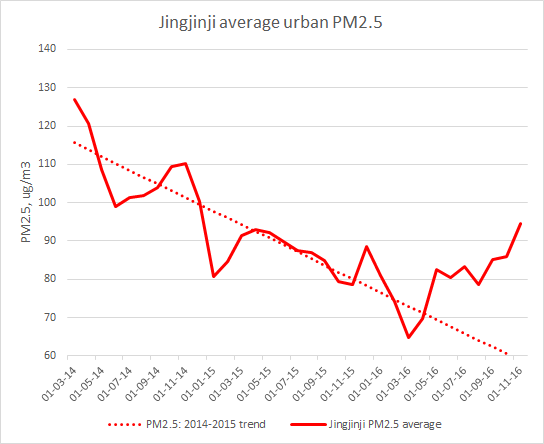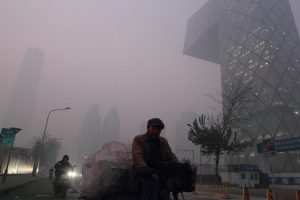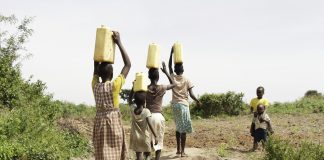China’s no stranger to problems with air pollution. But even by their own measure, they’ve clearly outdone themselves for the new year. After two dozen cities across the country issued their own red alerts for smog, China’s national observatory issued its first-ever national red alert for severe fog on Tuesday in what many are calling “airpocalypse”.
Winter months always see an uptick in smog levels as people burn low-cost coal to stay warm against the bitter cold. As a result, the northern and eastern regions of the country have been seeing a thick haze form since late last year. And the country is forecast to remain under its shroud through Wednesday.
People who can afford to leave the worst hit areas are doing so. These “smog refugees” are seeking bluer skies in other parts of China or neighboring countries like Japan and Korea. Meanwhile, inside the bowl of thick gray soup covering some of China’s cities, people are warned to stay indoors while factories and highways are forced closed and flights are canceled for lack of visibility.
And amazingly terrifying footage of the pollution is making its rounds through Chinese media.
All this dirty air comes with a heavy toll on health. Air pollution causes about 17% of all deaths in China which amounts to roughly 4,400 deaths per day. Yes, per day! A 2013 study found that people lose an average of 5.5 years from their life expectancy as a result of living with polluted air.
Pressure’s been mounting for a while now for the government to take action. And in 2014, China went so far as to declare a “war on pollution”. The effort paid off and citizens saw some reductions in air pollutants – especially levels of PM 2.5, the most dangerous pollutant capable of penetrating deep into the lungs. But the country is constantly weighing its environmental concerns with economic needs and it looks like air pollution is making a comeback.
According to Greenpeace, the uptick in pollution correlates to increased steel production in the northern China regions surrounding Beijing. The government released a short-term stimulus package in 2016 to boost steel and cement output from coal-fired production plants in an area called Jingjinji. And this is essentially erasing all the progress made in recent years to clean up the country’s air quality.

The government recognizes that the only way for the country to get its clean air back is to wean itself off coal and onto cleaner forms of energy. But the reality always takes longer to implement. Nuclear, solar, and wind energy all require a high upfront investment and will take more time yet to scale. Shale gas is one alternative solution that could fill the gap until China gets its renewable energy infrastructure up and running. But even that effort is slow to get moving.
This means for now, residents have little choice but to continue sitting in smog soup and wait for a whiff of fresh air to blow into town.











